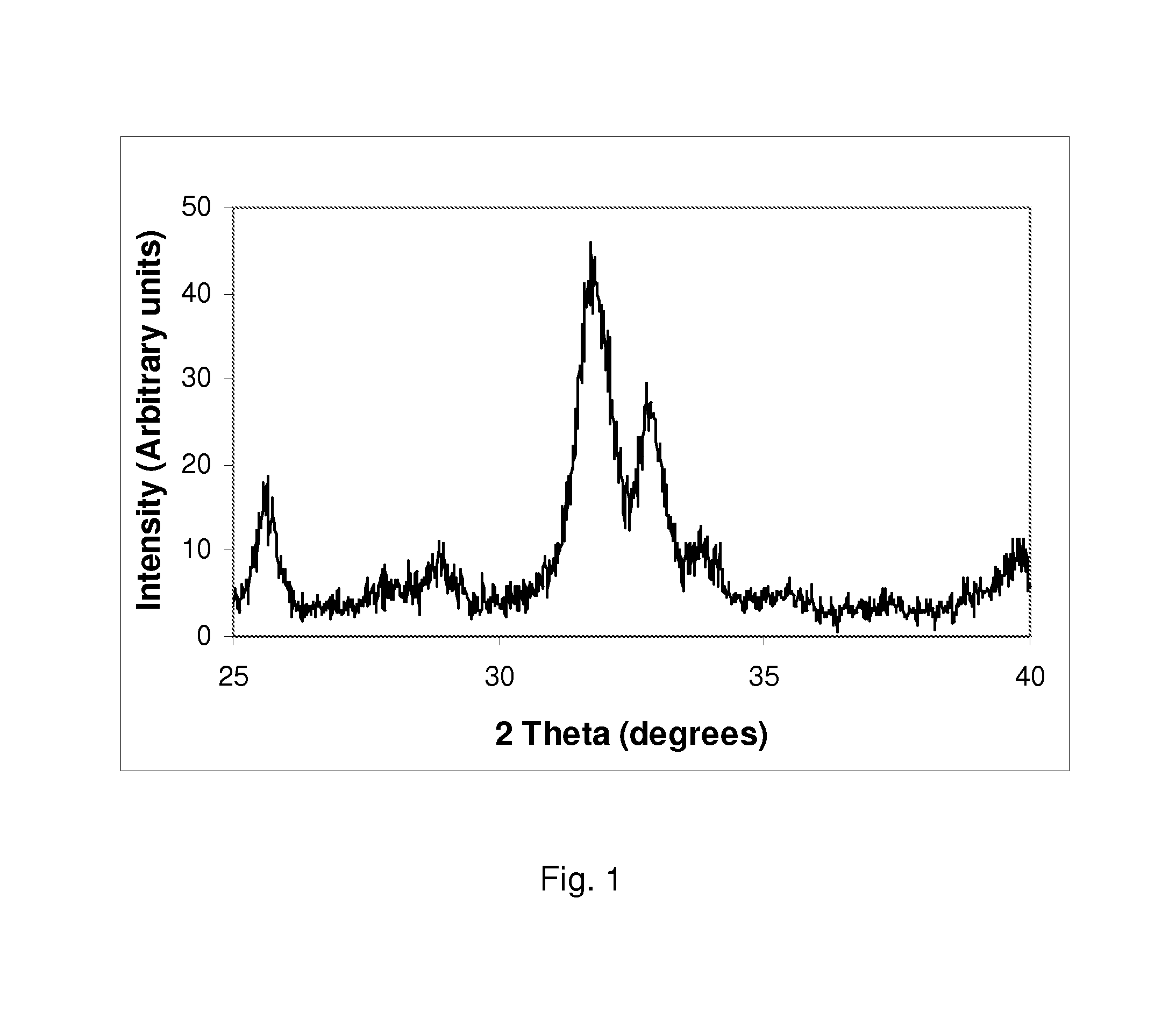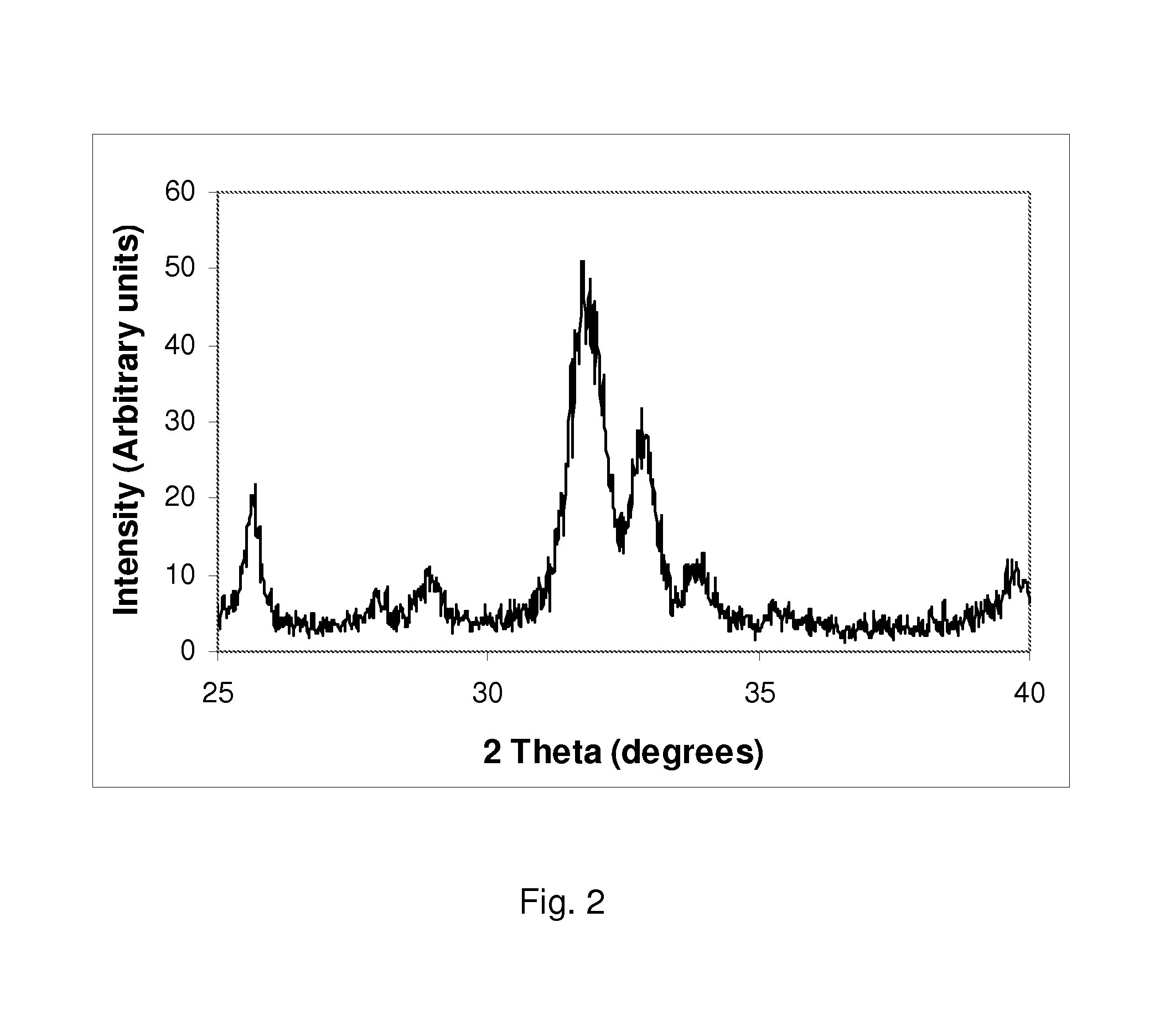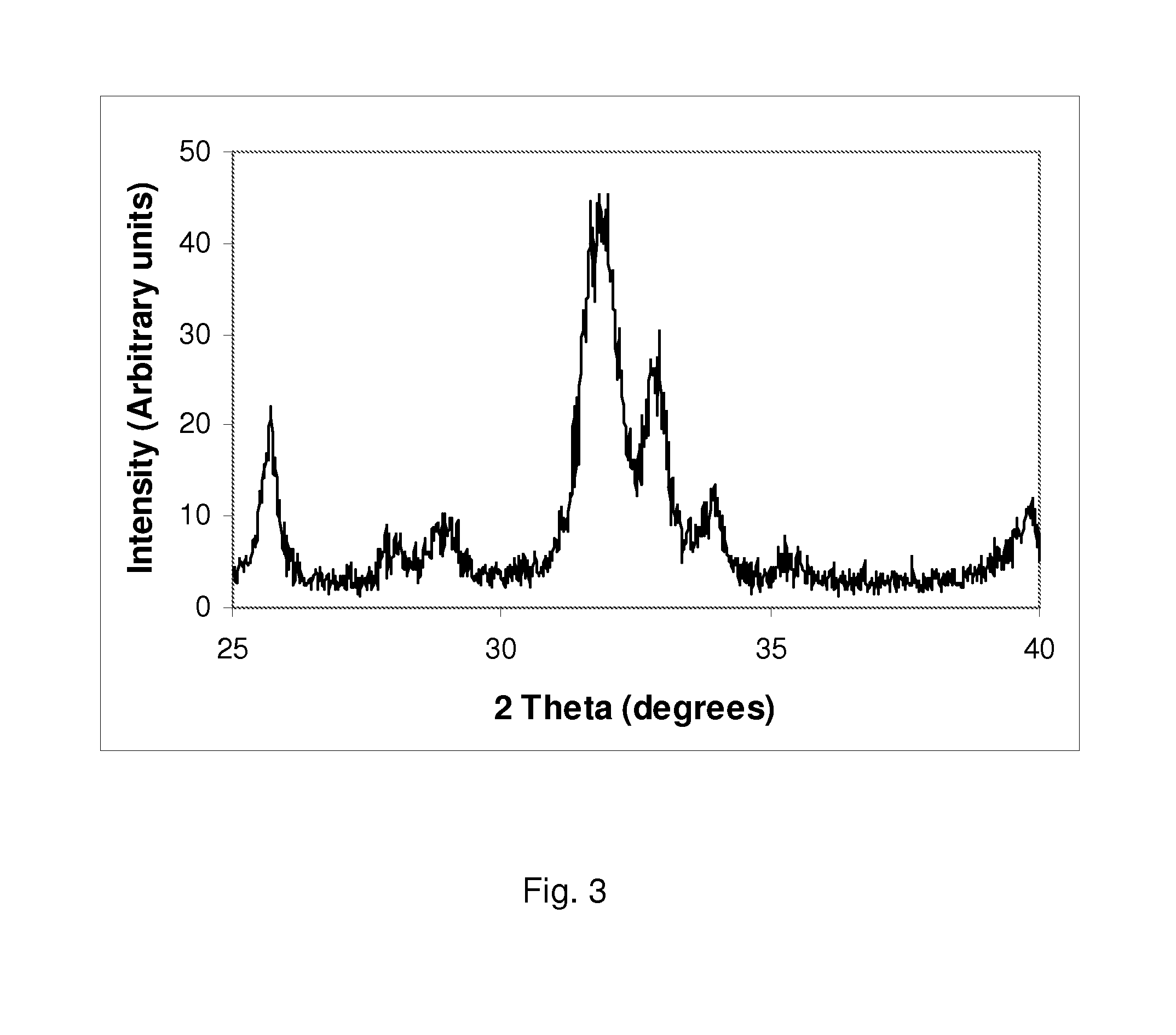Silicate-substituted hydroxyapatite
a technology of hydroxyapatite and silicate, which is applied in the field of inorganic silicatesubstituted hydroxyapatite, can solve the problem that the silicate-substituted materials are still very insoluble, and achieve the effect of facilitating large-scale manufactur
- Summary
- Abstract
- Description
- Claims
- Application Information
AI Technical Summary
Benefits of technology
Problems solved by technology
Method used
Image
Examples
example 1
Synthesis of a Silicate-Substitute Hydroxyapatite with a Ca / P Molar Ratio of 2.475, a Ca / (P+Si) Molar Ratio of 1.65 and a Silicon Content of Approximately 5.8 wt % (19 wt % Silicate).
[0066]0.495 moles of calcium hydroxide (36.679 g) were added to 1000 ml of deionised water and the aqueous suspension was stirred using a magnetic stirrer for about 10-15 minutes. 0.1 moles of tetraethyl orthosilicate (TEOS) (20.836 g) were added directly to the stirring calcium hydroxide suspension. This mixture was stirred for 5-10 minutes. 0.2 moles of orthophosphoric acid (23.053 g of 85% assay H3PO4) were added to 1000 ml of deionised water and stirred using a magnetic stirrer for about 5-10 minutes. The phosphoric acid solution was then placed in a dropping funnel and added drop-wise to the calcium hydroxide / TEOS suspension, over a period of about 60-120 minutes. After addition of the phosphoric acid solution, the pH of the reactant mixture was checked and the pH remained greater than 10, due to t...
example 2
Synthesis of a Silicate-Substitute Hydroxyapatite with a Ca / P Molar Ratio of 2.36, a Ca / (P+Si) Molar Ratio of 1.65 and a Silicon Content of Approximately 5.2 wt % (17.1 wt % Silicate).
[0068]0.495 moles of calcium hydroxide (36.679 g) were added to 1000 ml of deionised water and the aqueous suspension was stirred using a magnetic stirrer for about 10-15 minutes. 0.09 moles of tetraethyl orthosilicate (TEOS) (18.750 g) were added directly to the stirring calcium hydroxide suspension. This mixture was stirred for 5-10 minutes. 0.21 moles of orthophosphoric acid (24.215 g of 85% assay H3PO4) were added to 1000 ml of deionised water and stirred using a magnetic stirrer for about 5 to 10 minutes. The phosphoric acid solution was then placed in a dropping funned and added drop-wise to the calcium hydroxide / TEOS suspension, over a period of about 60 to 120 minutes. After addition of the phosphoric acid solution, the pH of the reactant mixture was checked and the pH remained greater than 10,...
example 3
Synthesis of a Silicate-Substitute Hydroxyapatite with a Ca / P Molar Ratio of 2.25, a Ca / (P+Si) Molar Ratio of 1.65 and a Silicon Content of Approximately 4.6 wt % (15.1 wt % Silicate).
[0070]0.495 moles of calcium hydroxide (36.678 g) were added to 1000 ml of deionised water and the aqueous suspension was stirred using a magnetic stirrer for about 10-15 minutes. 0.08 moles of tetraethyl orthosilicate (TEOS) (16.664 g) were added directly to the stirring calcium hydroxide suspension. This mixture was stirred for 5-10 minutes. 0.22 moles of orthophosphoric acid was weighed out (25.362 g of 85% assay H3PO4) and this was added to 1000 ml of deionised water and stirred using a magnetic stirrer for about 5-10 minutes. The phosphoric acid solution was then placed in a dropping funned and added drop-wise to the calcium hydroxide / TEOS suspension, over a period of about 60 to 120 minutes. After addition of the phosphoric acid solution, the pH of the reactant mixture was checked and the pH rema...
PUM
| Property | Measurement | Unit |
|---|---|---|
| molar ratio | aaaaa | aaaaa |
| molar ratio | aaaaa | aaaaa |
| Ca/P molar ratio | aaaaa | aaaaa |
Abstract
Description
Claims
Application Information
 Login to View More
Login to View More - R&D
- Intellectual Property
- Life Sciences
- Materials
- Tech Scout
- Unparalleled Data Quality
- Higher Quality Content
- 60% Fewer Hallucinations
Browse by: Latest US Patents, China's latest patents, Technical Efficacy Thesaurus, Application Domain, Technology Topic, Popular Technical Reports.
© 2025 PatSnap. All rights reserved.Legal|Privacy policy|Modern Slavery Act Transparency Statement|Sitemap|About US| Contact US: help@patsnap.com



